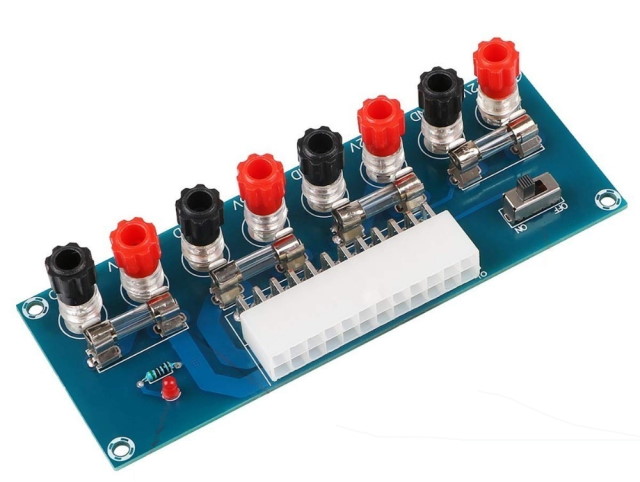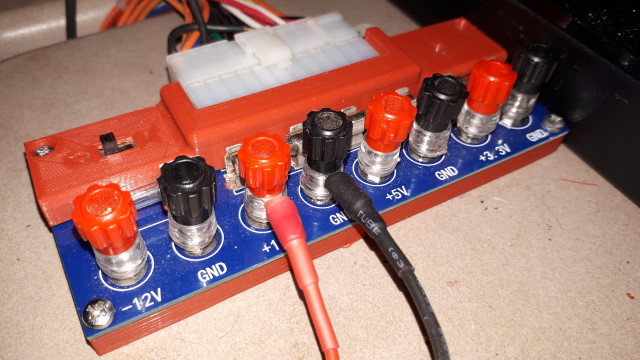

The ATX Power Breakout is marketed under a number of different names, but they all appear to be the same. It is designed to connect directly to the motherboard connector of an ATX power supply and provide screw terminals for -12v, +12v, +5v and +3.3v. Each output is fused. There is an on-off switch which uses the power control input, and an indicator LED.

When a fork or ring connector is used with the terminal and the securing knob screwed down the connector isn't always a tight fit. The terminal knobs screw down tightly, and everything looks OK, but some of the connections are loose and the cables can either fall out or act intermittently. The problem does not occur if the connection is made with a wire wrapped around the post, as the wire is thicker than the fork or ring.
The cause of the problem is that the knurled nuts in the knobs cannot screw right down to the surface of the plastic spacer on the base of the posts because the posts are not threaded far enough into the middle section. The knobs screw down onto the ends of the threading instead of onto the connector inserts.
A possible fix is to cut the thread on the post further into the middle section, but that requires a suitable die. The simplest fix is to use some washers to increase the thickness of the, but the washers are a nuisance to deal with. The best fix is to trim away a small section of the thread in the bottom of the nut. Only a tiny amount is needed - about half the thread pitch. The best tool for doing this is a cone-shaped grinding piece in a Dremel, but a drill bit could also be used.

